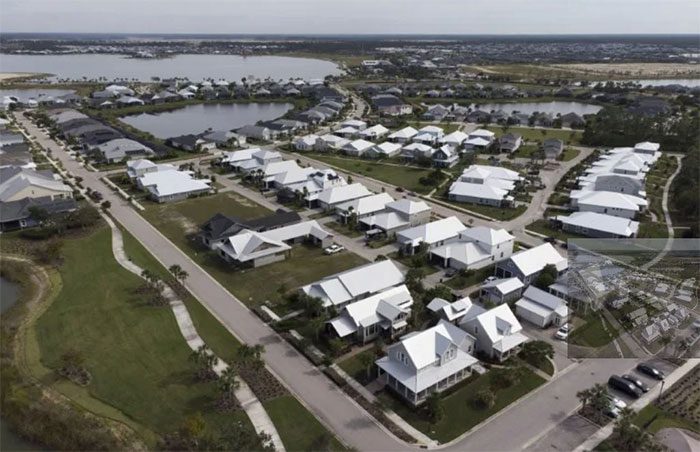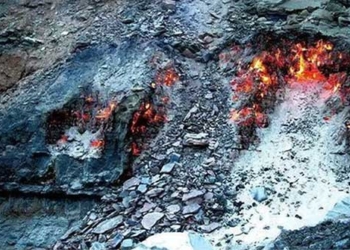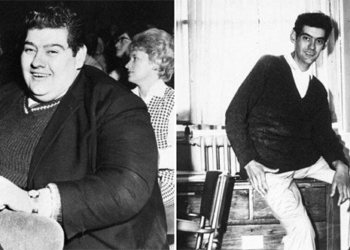When Hurricane Ian swept through Southwest Florida last year, Mary Frisbee was not worried at all, despite her home being in the path of the storm.
Frisbee calmly watched television and browsed the internet. Her family lives in Babcock Ranch, a town near the Gulf Coast. This town was built on two principles: homes must be sturdy and capable of withstanding major hurricanes.
The Babcock Ranch community is very cautious about the power of nature. To avoid flooding caused by hurricanes, Babcock is built about 9 meters above sea level. Planners also protect lowland areas in the region to act as a sponge for excess water.
The first test of the anti-hurricane model in Babcock occurred in September 2022 with the Category 4 Hurricane Ian and was successful. No residents suffered significant damage. The community did not lose power, and only a few trees were downed.

Babcock Ranch in Florida may serve as a model for urban planners in the context of dangerous climate change. (Photo: Yahoo News)
From Theory to Practice
Babcock Ranch is picturesque. Homes with lush green lawns overlook lakes. Leisurely bike paths and forests wind through the community. In the parks, children happily ride their bikes or play on swings.
This town was established in 2018 and currently has 7,200 residents. It continues to expand with the construction of new housing developments. Eventually, the population is expected to reach around 50,000.
Syd Kitson, a former professional football player, is the developer of this area. In 2005, he paid $700 million to purchase a 372 km2 ranch. Most of this land was sold back to the state of Florida to establish a nature reserve.
On the remaining 72 km2 of land, Kitson built his dream city: a place with housing, shops, and schools that would attract young families and retirees looking to settle under the warm Florida sun.
In the suburbs, Babcock Ranch is equipped with 680,000 solar panels. As a result, it is the first town in the United States to operate entirely on solar energy. Power lines are buried underground to avoid storm damage.
On paper, the model for Babcock appeared perfect. But on September 28, 2022, Hurricane Ian arrived.
The faith of residents like Mary Frisbee and her 78-year-old neighbor Donald Bishop—who had lost a home in Mississippi due to a hurricane—was put to the test.
Kitson stated that he couldn’t sleep the night of the storm.
“We had never been tested before, so we didn’t know what to expect. At that time, there were about 5,000 people living here. They are neighbors I had advised to shelter in place. I felt a really strong sense of responsibility,” Kitson recalled.
He breathed a sigh of relief when he found out that Hurricane Ian, with winds of 240 km/h and torrential rain, caused almost no damage to his town, while devastating the nearby Fort Myers area and resulting in nearly 150 fatalities.
In other parts of Florida, damage was estimated to exceed $110 billion.
A Model for Other Areas?
Most Floridians cannot receive the same level of protection as Babcock residents. They live in lower-lying areas.
The U.S. government’s Coastal Management Office reports that out of Florida’s 19.6 million residents, 15 million live in coastal areas.
However, Kitson believes that the practical model of Babcock can be applied elsewhere.
This is also the shared perspective of Yoca Arditi-Rocha, executive director of the environmental NGO Cleo Institute. He believes that the biggest lesson from this community is that we need to build cities and communities with a mindset geared towards confronting climate change.
This is particularly true in Florida, the fastest-growing state in the U.S., which is suffering heavily from disasters such as rising sea levels and hurricanes.
However, this activist notes that such newly planned communities are not entirely perfect, as housing costs in Babcock are quite high, only affordable for a select few.
Developer Syd Kitson stated he has considered this factor and aims to guide Babcock to become a town for everyone, with various types of housing and price points.




















































